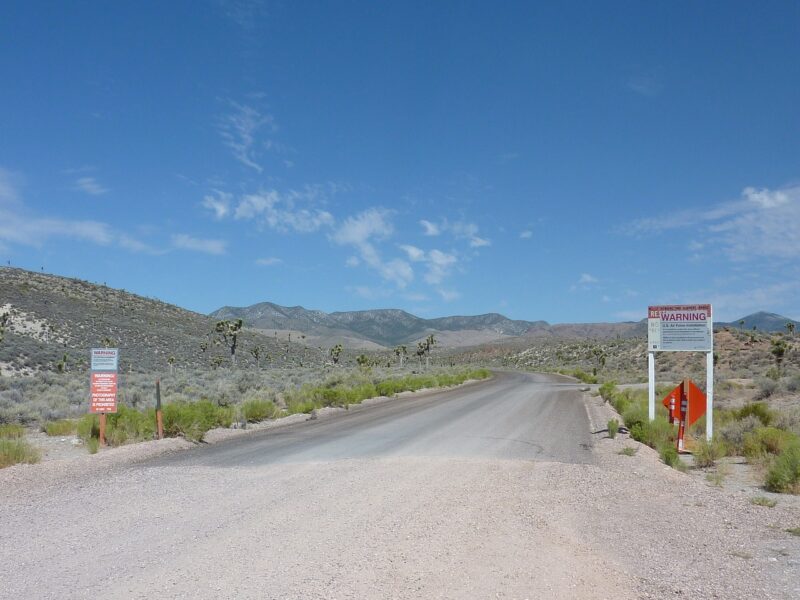Area 51: Theories, Secrets, and Why the Government Tried to Hide It
November 15, 2024

Area 51, a highly classified United States Air Force facility located in Nevada, has long been the subject of speculation, conspiracy theories, and intrigue. This remote site, officially known as Groom Lake or Homey Airport, has often been linked to UFO sightings and enigmatic military operations. As we delve into the history, theories, and government secrecy surrounding Area 51, we uncover why it became a focal point for conspiracy theorists and curious minds alike.
1. The Origins of Area 51
Constructed in the 1950s, Area 51 was established as a testing and development site for the Central Intelligence Agency’s U-2 spy plane during the Cold War. Its remote location provided a perfect cover for secretive military projects, away from prying eyes. The secrecy surrounding the base intensified following numerous military operations and technological advancements that were often shrouded in mystery.
The use of the term ‘Area 51’ can be traced back to government maps from the 1960s, which identified the site as a key operational area for testing top-secret aircraft. However, as time passed, it became infamous not just for its official operations, but for the rumors and theories that emerged around it.
2. Covering Up Secrets: The Government’s Approach
The U.S. government’s refusal to acknowledge the nature of activities at Area 51 fueled public speculation. In 1994, a CIA document confirmed the existence of the base, but avoided addressing the controversies surrounding it. This avoidance strategy reinforced the notion that Area 51 was not just a testing site, but potentially the venue for more sinister and sensational operations.
Some of the efforts to keep Area 51 under wraps included:
- Restricted Airspace: The airspace above Area 51 is heavily restricted, straying into it can lead to immediate interception by military aircraft.
- Limited Access: The base is surrounded by a barren desert and has highly monitored checkpoints, making unauthorized access nearly impossible.
- Disinformation Campaigns: The government has also been accused of spreading disinformation to detract from real activities taking place, including staging false UFO sightings to shift public attention away from secret projects.
These methods led to a cultural notion that if the government was hiding something, it must be extraordinary.
3. The Rise of Conspiracy Theories
With its clandestine reputation, Area 51 became a beacon for various conspiracy theories, ranging from alien encounters to advanced military technology. Some notable theories include:
- UFO Encounters: Many believe that downed UFOs are stored and analyzed at Area 51. Reports of alien bodies being recovered from crash sites and experimented upon continue to intrigue theorists.
- The Aurora Project: A rumored program to develop a high-speed aircraft, allegedly capable of reaching hypersonic speeds. Theories suggest that the secretive nature of this project correlates with the hidden research at Area 51.
- Advanced Weaponry Tests: The perception that Area 51 houses experimental aircraft and weaponry has led some to theorize it’s the testing ground for technology decades ahead of its time.
While many of these theories are based on anecdotal evidence and unsubstantiated claims, they demonstrate the public’s fascination with the unknown and the allure surrounding Area 51.
4. The Cultural Impact of Area 51
The intrigue surrounding Area 51 has seeped into popular culture, influencing films, books, and television shows. The base has been depicted in numerous works, often portrayed as a hub for government cover-ups and alien conspiracies. Some examples include:
- Movies: Blockbusters like Independence Day and The X-Files capitalize on the mysterious nature of the facility, further embedding it into public consciousness.
- Television Shows: The lore surrounding Area 51 became a central focus in popular series, merging fact with fiction in the minds of viewers.
- Video Games: The mystique of Area 51 has also inspired video games, with scenarios centered around alien encounters and government conspiracies, presenting players a world where they can explore these enigmas firsthand.
This cultural impact is a testament to Area 51’s role as a symbol of secrecy and the unknown, captivating imaginations across generations.
5. Recent Developments and Public Interest
In recent years, Area 51 has experienced an increase in public interest fueled by social media. In 2019, a viral Facebook event titled “Storm Area 51, They Can’t Stop All of Us” turned into a festival drawing thousands to nearby towns, although only a fraction actually showed up at the gates. This incident illustrated how digital culture can amplify curiosity and speculative narratives.
Moreover, documentary series and investigative pieces on platforms like Netflix and YouTube have been released, delving deep into the mysteries and conspiracies surrounding Area 51, seeking to uncover the truth hidden below layers of government secrecy and public belief.
As interest grows, so does the conversation about government transparency, the ethics of secrecy, and the general public’s right to know what occurs behind closed doors.
6. Conclusion: The Enduring Enigma of Area 51
Area 51 remains one of the most recognizable symbols of secrecy and mystery, embodying the complex relationship between governments and their citizens. The allure of the unknown, combined with government denial and disinformation, has created a fertile ground for conspiracy theories and speculation. As we continue to seek truth in the face of secrecy, the enduring enigma of Area 51 retains its place at the heart of popular culture and imagination, reminding us that some topics remain tantalizingly elusive.
Whether you believe in UFOs or in merely the advanced military technologies shrouded in secrecy, Area 51 will likely continue to fascinate and provoke curiosity for years to come.







